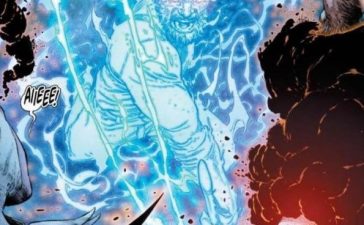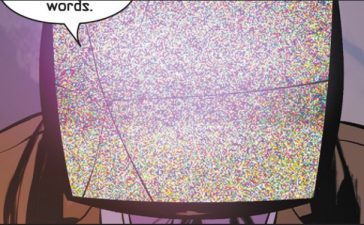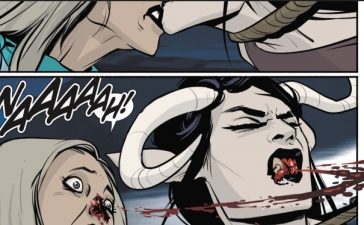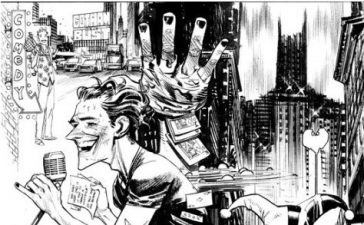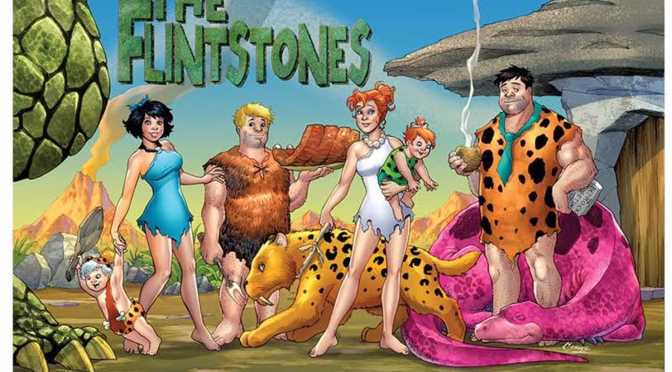
THIS WEEK’S FINEST: THE FLINTSTONES #1
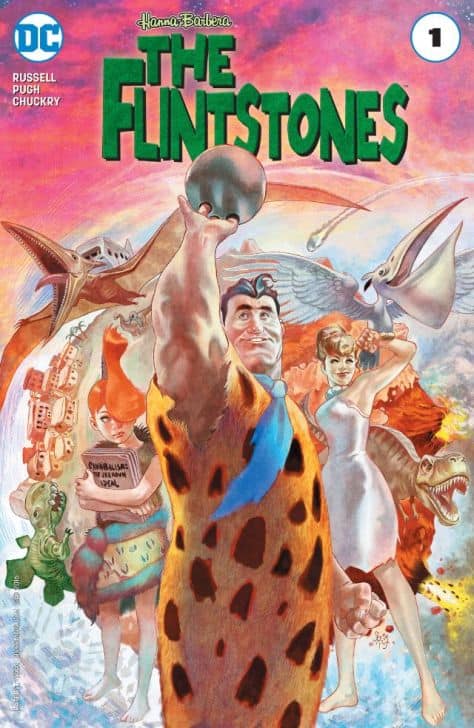
By Mark Russell, Steve Pugh, Chris Chuckry, Dave Sharpe
The Modern Stone Age family is back, more modern and Stone Age-er than ever. The Flintstones, occupying a significant portion of cartoon viewing in my childhood, peaked my interest in this comic. Although I’ve always leaned more towards The Jetsons, Russell and Pugh are making me question such life choices…
The Flintstones is one of those properties that, on its face, just sounds dumb. It’s a story about Cro-Magnon people (told before Evolution was taught in schools) but played for laughs by juxtaposing the setting with machines that would never exist then. They have (sorta) cars, washing machines, lawnmowers, telephones, even airplanes! The other thing that made it unique was that even though it was animated, it was still presented more or less as a family sitcom dealing with typical problems of adults. They weren’t so ahead that I couldn’t follow the stories as a child, but I instantly recognized “ok, this is what adults are meant to go through”.
Researching the history of The Flintstones and prehistory itself, I can see what Russells changed and how “accurate” his script is. For one thing, Russell actually picks up on what the original cartoon did in satirizing 1960s family dynamics. He also makes the distinction between Cro-Magnon and Neanderthals, although that part is a little unclear. The dialogue seems to suggest that the main cast of The Flintstones are Homo Sapiens, but actually should be Cro-Magnons (in the context of the story. Cro-Magnons were an early ancestor to Homo Sapiens).
The first issue deals with Fred and his wife Wilma’s separate attempts to improve their lives, Fred wants to earn a promotion by courting a trio of Neanderthal men to work at his boss’s quarry and Wilma tries to become a professional artist with her cave paintings. Fred, as I remember him in the show, was always slow on the uptake and not really one to move up in the world. Russell plays him as a man of few words, trying to make the most of what’s in front of him. Almost like a family man who hasn’t moved forward in years, which he hasn’t. It’s a subtle way of transferring Fred’s character to print instead of animation. His attempts to sway the Neanderthals fail as they are unimpressed by anything modern culture has to offer, except for balloons.
Fred: “How do you like making rocks?”
Neanderthal: “I hate it. What the?”
Fred: “It’s money.”
Neanderthal: “What do I do with it?”
Fred: “I don’t know, spend it on something someone else hated making.”
Capitalism in a nutshell ladies and germs.
Wilma’s foray into the arts likewise goes south, as its too primitive for others to grasp, even Fred. It ends up being a touching moment and typical of Flintstones’ stories, Fred learning a lesson and solving whatever differences he had with his wife/neighbor/boss. Although Fred doesn’t understand his wife’s art, he still supports her endeavor however her art is in fact a deep tradition from Wilma’s tribe and important to her. Learning this, Fred gains new insight into his wife’s being and grows closer to her.
There’s an article I read before this issue comparing it to the AMC drama Mad Men. I’ll tell you right now, it’s a pretty big stretch to make. Don Draper wouldn’t support Betty entering an art gallery, he’d be too busy trying to sleep with a young female artist who may or may not have daddy issues and also a drug problem. Mr.Slate isn’t really like Roger Sterling, although both men are contemptible Roger had a deep, deep, deeply buried sense of good in him. Mr.Slate is more like Mr.Burns off The Simpsons, which is funny as I always preferred Mr.Slate to the identical boss figure on The Jetsons. That’s yet another aspect that stuck out to me about this issue, it has some bite.
It’s not as dark as Wacky Racers, but it’s not as lighthearted as Future Quest either. Its bite does give it a sense of modernity and sells the satire. Why do Cro-Magnons love violence so much more than Neanderthals? I don’t know, but they do and it’s a shocking truth today as well.
Walking a nice middle ground is artist Steve Pugh, who you might remember illustrated Jeff Lemire’s early Animal Man run. While that art was dark, crosshatched and stylized, here it’s a stunning homage to the cartoon’s style.
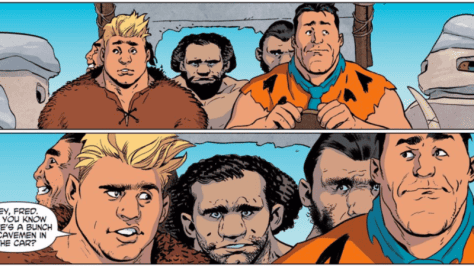
It’s more detailed and takes its exaggeration in the opposite direction, but you can see where he’s coming from. Also funny is the way that Fred and Barney kind of do look prehistoric with their large frames and tall faces. Yet you can distinguish them from the Neanderthals by the size and shape of their faces and bodies. Lest I forget scenery, with Chris Chuckry’s colors it does look like the cartoon but placed in high definition. The animals are large and powerful looking, but have the same charm that a cartoon animal has just by default. Both his interior art and the cover at the top convey a real love for these characters and it shows quite well.
This comic really is like an updated version of the show and I love that. It is deeper and full of concepts I can grasp now that I couldn’t 19 years ago (such as land appropriation, colonialism, MMA fighting, passing religious iconography). It feels like how one of these Hanna-Barbara revamps should, respectful of the past but bold enough to exist in the now, which really could sum up what most comics must aspire to in general. If you’re a fan of the cartoon/property, or have ever been curious as to why it’s had such place in people’s hearts than this issue has all you need.
Yabba Dabba.





